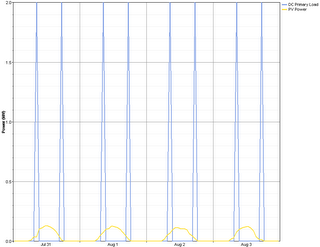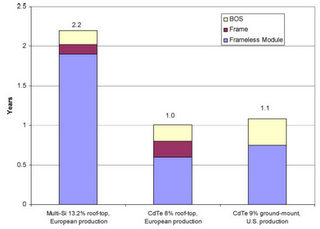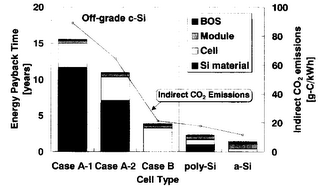[Insert David Suzuki's voiceover from "
The Nature of Things"]
The Doomatinus Howlsatmoonicus, known by the colloquial name 'Doombat'. A newly discovered species, the doombat is an offspring of the `net denziens peak oil doomer and moonbat.
The moonbat's habitat is almost exclusively located in the contential USA due to their unique dietary requirements. Doombats sustain themselves through a unique combination of SUV exhaust, electronic emissions from omnipresent NSA wiretaps, and the stench of decaying Republicans.
Doombats are well known in the blogosphere for their fetish for tinfoil hats.
It's become pretty clear to me that technology is not the limiting factor in determining how civilization deals with peak oil as a phenomenon. How culture adapts to the increasing rarity of its favourite fungible energy resource has more to due with sociology than technology or geology. While we can't say anything about the reactions of the vast majority of citizens that aren't even aware of the concept, I think it would be interesting to build a graph of the taxonomy of peak oil blogosphere denizens. After all, what better way to offend a bushel of people than to arbitrarily histogram them and make specious claims about the composition of each bin?
There are four major sub-denizen groups in the peak oil blogosphere:
- Corncucopians
- Traditionalists
- Technopeakers
- Doomers
Corncucopians don't believe in any imminent peak in world oil production. They typically point to how under priced oil was in 1997 and how that had a major negative impact on investment, the lag of which is being felt today. Corncucopians further believe that with the application of higher average oil prices, unconventional sources (tar sands, deep water, shale oil, etc.) will become practical and come online after some similar lag period from the lows of 1997 to the highs of 2006. The stereotypical cornucopian is either an economist or oil industry worker and their experience and education leads them to this conclusion.
The population of corncucopians isn't very large because they tend to leave the blogosphere once their views harden. Without the anxiety over peak oil, there's little reason for them to stick around. There are some exceptions, namely the ones that enjoy baiting the doomer denizens (a.k.a.
doomer baiting).
The traditional wing of peak oil denizens is primarily focused on the geology of Peak Oil: the when and the where. Traditionalists are unique in that they have a single home, namely
The Oil Drum. Only doomers have anything like the community of traditionalists but they are still more diffused throughout the blogosphere.
Traditionalists can be subdivided into two basic groups: the
patricians and the
plebeians. The patricians of traditional peak oil provide the talking points, the graphs, and the philosophy of the sect. Traditionalist plebeians are concerned about peak oil but lack the confidence or expertise to form their own opinions on the subject. Instead they stroke the egos of their patricians and parrot their talking points. The plebeians are the driving force behind the unified front that traditionalists present − their positive reinforcement helps their patricians to stay on message.
While traditionalists greatly enjoy the frottage of predicting peak oil dates and decline rates, they suffer from the fact that the majority of data is either spurious or proprietary. This leads to a loss of credibility when predictions turn out to be false.
Traditionalists are the one species of peak oil denizens that focus effort on trying to raise awareness in the general citizenry. Any mention of the keywords "peak oil" in the mainstream media provokes and outburst of euphoria. In contrast any publication on energy issue that doesn't resolve around the ontology of peak oil receives heaps of scorn. This can be compared to the reaction of small countries being named by the major media outlets of the United States. E.g. " Canada's Steve Nash has been named the NBA's MVP for the second time." Canada: Oh my god, ABC said 'Canada' on the air; USA: turn on NASCAR.
The biggest failure on the part of the traditionalists is largely a lack of imagination. For example traditionalists will examine car fleet replacement rates and assume that they will remain steady in the face of rising oil prices. The patricians look to history for solutions to peak oil and them extrapolate from there: they see an upturn in the use of rail transport, a surge in coal consumption. History rarely repeats itself.
Technopeakers can be roughly stereotyped into those with formal scientific or engineering training and the
Wired crowd. The ones with formal education likely have at least read about basic thermodynamic principles and are less likely to physically impossible claims. The technopeakers are a diverse group. There are differences in opinion among pretty much every one with regards to issues like biofuels, nuclear power, renewables, etc. Because of this mélange of interests there is common dissent and in fighting among themselves that the outside world remains oblivious to; technophiles sometimes engage in the self-defeating tactic of the circular firing squad.
The loudest type of technopeaker is the
one-shot Jonnys who fanatically believe in a magic bullet technological solution to cure all our ails. Nuclear fusion, hydrogen economy, and distributed solar power are all popular topics. Amory Lovins is probably the best known out of this group from his emphasis on conservation.
The biggest technophile group is the
techo-optimists. These guys believe in peak oil but think that technology will save us. As such they tend to be pro-free market. Along with corncucopians, techno-optimists are the most likely blogosphere denizens to engage in doomer baiting.
The last major group is the
techo-curmudgeons. Curmudgeons are the most likely group to have actual experience with R&D and tend to be grumpy and frustrated at the gamut of problems they encounter. They take an elitist view of the world and as a result are more likely than other technophiles to support government intervention because they don't trust the wisdom of the masses. Curmudgeons are often very number savvy but as a result they avoid any topic they have trouble quantifying because it's too much work. They likely point out the shortfalls of the technology they know the most about, and promote the technologies they know the least about due to their cynical worldview. This group includes me.
Doomers spawn from the same fertile sediment as traditionalists but the two differ significantly on philosophy. Traditionalists tend to view the world as primarily altruistic while doomers view the world as primarily avaristic. This in turn colours how they believe people at large will react to shrinking oil supply versus growing demand. Doomers view oil as some kind of faustian substance and generally contrive to make logical connections that convince them that society will collapse when oil production peaks.
Doomer powerdowns are the most common and mildest Doomer subspecies. Their philoshopy is based on the singular assumption that the cost of cheap oil is embedded in everything and that rare oil will quickly make all modern economic activities impossible, regardless of their relative value to society. Powerdowners are very likely to correlate peak oil with peak energy. The end game for the powerdown sect is humanity reduced to 19th century technology and infrastructure. Anacedotally, powerdowners are the most likely members of the peak oil community to be suburbanites themselves with few practical skills outside the 3rd sector of the economy. Since they are more highly exposed than the rest of the world, they have correspondingly more anxiety about the consequences of peak oil.
Doomer nihilists take the powerdown scenario one step further to the die-off scenario and believe that the end of the oil age is here and the future will be an exact replica of the Mad Max movies until humans consume all oil and then promptly reach paleolithic age technology. To an extent they fuse the metality of 2K survivalists with the doomer culture.
Doombats, as described above, merge doomer and moonbat culture. Essentially they believe in the doomer precepts but transfer all the responsibility to George Bush, Big Oil, the Military-Industrial Complex, or whatever illuminati cabal they hold responsible for the ills of the world.





